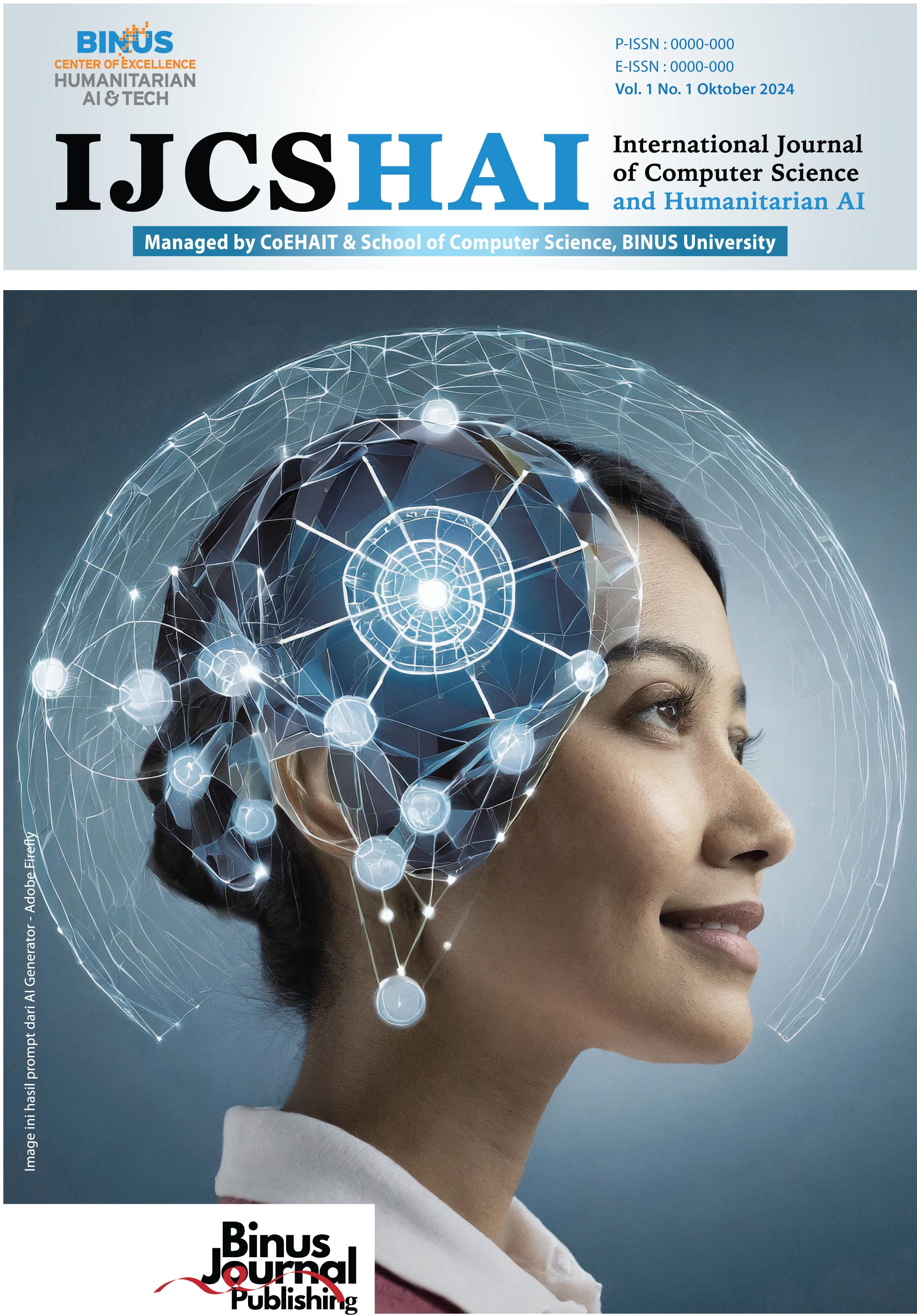Implementation of Spatial Constraints in Clustering Algorithms: A Study on Basic Infant Immunization in Lamongan District During the COVID-19 Pandemic
DOI:
https://doi.org/10.21512/ijcshai.v1i1.12149Keywords:
Spatial Constraint, Spatial Clustering, Clustering, Basic Infant ImmunizationAbstract
Algorithms for clustering data are important for data analysis, especially when finding patterns in big datasets. Nevertheless, the spatial limitations that are important in real-world contexts are generally ignored by the classic clustering approaches. Spatial variables have become more significant in the health industry, particularly during the COVID-19 pandemic, in terms of assessing population requirements and the allocation of healthcare resources. The purpose of this work is to investigate the use of spatial restrictions in clustering algorithms and to apply this method to COVID-19 immunization data from Lamongan District. The data analysis includes the 27 subdistricts of Lamongan District for the year 2021. Based on the peak of the COVID-19 pandemic, which had a major effect on baby immunization coverage, 2021 was chosen. The four basic baby immunization coverages—DPT-HB-Hib3, Polio 4, Measles, and BCG—are the variables that are used. Two methods are used: a neighborhood-like hierarchical clustering algorithm and spatial limitations. Distance-based spatial weights are better than proximity-based spatial weights when it comes to spatial constraints. This method is employed because an infant's coverage of all essential vaccines may be impacted by the spatial structure. We discovered that the fundamental baby immunization variable formed five clusters. It was discovered that cluster five had the highest immunization coverage among all the clusters. The three sub-districts that make up this cluster are Mantup, Kembangbahu, Tikung, Sarirejo, Deket, Glagah, and Karangbinangun.
References
M. Allaoui, M. L. Kherfi, and A. Cheriet, "Considerably improving clustering algorithms using UMAP dimensionality reduction technique: a comparative study," in Int. Conf. Image Signal Process., Cham: Springer Int. Publishing, June 2020, pp. 317–325.
H. Usman and M. Lizam, "Exploring some spatially constrained delineation methods in segmenting the Malaysian commercial property market," Int. J. Strategic Property Manag., vol. 27, no. 6, pp. 379–390, 2023.
I. Franch-Pardo, B. M. Napoletano, F. Rosete-Verges, and L. Billa, "Spatial analysis and GIS in the study of COVID-19. A review," Sci. Total Environ., vol. 739, p. 140033, 2020.
S. Basu et al., "Impact of the COVID-19 pandemic on routine vaccine landscape: A global perspective," Hum. Vaccines Immunotherapeut., vol. 19, no. 1, p. 2199656, 2023.
B. M. Rizaldi, F. Setiawan, W. A. Violando, and A. D. Muttaqin, "Analisis Perubahan Stok Karbon Berdasarkan Perubahan Penutupan Lahan dari Tahun 1990–Tahun 2020 di Wilayah Pesisir Kabupaten Lamongan, Provinsi Jawa Timur," in Prosiding Forum Ilmiah Tahunan (FIT)-Ikatan Surveyor Indonesia (ISI), vol. 1, pp. 81–88, 2021.
P. K. Jithesh, "A model based on cellular automata for investigating the impact of lockdown, migration and vaccination on COVID-19 dynamics," Comput. Methods Programs Biomed., vol. 211, p. 106402, 2021.
P. R. N. Saputra and A. Chusyairi, "Perbandingan metode clustering dalam pengelompokan data puskesmas pada cakupan imunisasi dasar lengkap," J. RESTI (Rekayasa Sistem dan Teknologi Informasi), vol. 4, no. 6, pp. 1077–1084, 2020.
I. G. Jaya, B. N. Ruchjana, Y. Andriyana, and R. Agata, "Clustering with spatial constraints: The case of diarrhea in Bandung city, Indonesia," J. Phys.: Conf. Ser., vol. 1397, 2019.
Dinas Kesehatan Kabupaten Lamongan, "Profil Kesehatan Kabupaten Lamongan 2021," [PDF]. Available: https://lamongankab.go.id/dinkes/post/1872.
M. D. Purnama, C. D. Farrel, S. F. Wahyuniarti, I. P. Nuraini, and A. Oktaviarina, "Analisis Perbedaan Data Komponen Kesehatan Bayi Provinsi Jawa Timur Tahun 2022 Menggunakan MANOVA," J. Sains dan Seni ITS, vol. 12, no. 6, 2023.
M. Anugrahayu and U. Azmi, "Stock portfolio optimization using mean-variance and mean absolute deviation model based on K-medoids clustering by dynamic time warping," J. Matematika, Statistika dan Komputasi, vol. 20, no. 1, pp. 164–183, 2023.
M. Chavent, V. Kuentz-Simonet, A. Labenne, and J. Saracco, "ClustGeo: an R package for hierarchical clustering with spatial constraints," Comput. Stat., vol. 33, no. 4, pp. 1799–1822, 2018.
Downloads
Published
How to Cite
Issue
Section
License
Copyright (c) 2024 Mohammad Dian Purnama; Moh Jainur Miko Wahyudi

This work is licensed under a Creative Commons Attribution-ShareAlike 4.0 International License.
Authors who publish with this journal agree to the following terms:
- Authors retain copyright and grant the journal right of first publication with the work simultaneously licensed under a Creative Commons Attribution License - Share Alike that allows others to share the work with an acknowledgment of the work's authorship and initial publication in this journal.
- Authors are able to enter into separate, additional contractual arrangements for the non-exclusive distribution of the journal's published version of the work (e.g., post it to an institutional repository or publish it in a book), with an acknowledgment of its initial publication in this journal.
- Authors are permitted and encouraged to post their work online (e.g., in institutional repositories or on their website) prior to and during the submission process, as it can lead to productive exchanges, as well as earlier and greater citation of published work.
USER RIGHTS
All articles published Open Access will be immediately and permanently free for everyone to read and download. We are continuously working with our author communities to select the best choice of license options, currently being defined for this journal as follows: Creative Commons Attribution-Share Alike (CC BY-SA)





